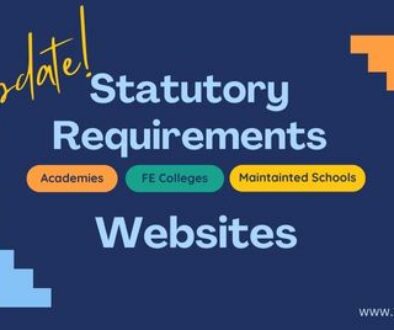Let’s Go Paperless in Schools
Stop printing, get online, cut cost and save the environment
As more and more banks and utility companies persuade, incentivise and cajole us into switching to paperless bills and statements, one wonders why Schools are not doing the same? The amount of paper and ink saved from sending out newsletters, letters to parents, event calendars and announcements per week, month or term would translate directly to significant cost savings for schools.
Going paperless would reduce the cost of maintaining photocopiers and printers; the cost of ink and toner consumables and spares would undoubtedly feature less in the ICT budget. On top of this, schools will be taking the lead in contributing to an eco-friendly means of communication – helping to reduce waste and save trees. So how exactly would schools go about achieving this? These are some of the options available to reduce printing and paper copies.
Opt-in instead of Opt-Out
 These days utility companies and banks are not making it a choice for their customers to switch to paperless (opt-out). On the contrary, new clients are given the option to receive paper copy only if they op-in (often with a token charge of £1 per statement), making paperless transactions and communications the norm. More and more people are getting used to receiving their statements and invoices electronically through email or managing their bank accounts online.
These days utility companies and banks are not making it a choice for their customers to switch to paperless (opt-out). On the contrary, new clients are given the option to receive paper copy only if they op-in (often with a token charge of £1 per statement), making paperless transactions and communications the norm. More and more people are getting used to receiving their statements and invoices electronically through email or managing their bank accounts online.
Why not do the same in schools, instead of asking if parents would like to opt-out of receiving printed newsletters and letters, make the decision to ’switch off’ this mode of communication entirely and only offer paper copies to those who want to receive them (opt-in). It is a big cultural change but unless drastic steps are taken, schools will find it hard to move away from paper copies.
By using ‘opt in’ instead of ‘opt out’ of paper form of communication, you might be wondering how schools would get their message across to parents. There are several ways to do this and the best and by far the quickest way will be by email. However, gathering of email addresses from parents is no small task on itself. Switching off all paper communications will definitely be a push for parents to register their email addresses with the school.
For new students, schools can ensure that parents complete the email address fields. All school administrators need to do is to set up mailing lists according to year groups as well as one for all parents and ensuring that email addresses stay hidden from other recipients using the Blind Carbon Copy (BCC) field when composing emails. Commercial services are also available that provides an easy way of mass email to a pre-registered mailing list that the school maintains online.
Website
The school’s website is also a great way of conveying messages to parents and useful as a publicity tool. School newsletter and all communications which are deemed safe for public consumption can be published on the website. Often neglected, a school’s website has so much potential and can be used to communicate news and events, announcements and celebrate student achievements. It is also possible to set up an RSS feed or an email subscription for school announcements and updates.
If you would like to find out more about how you can take advantage of this great resource and at the same time create a big positive impact for your school’s online presence, speak to us. We design and maintain websites for the education sector and businesses.
Text Messaging
Given that mobile phones are ubiquitous these days, with most parents owning at least one between them, getting short messages out to them in the form of text messages can be very effective. Emergency messages, school closures and attendance notices can be pushed out in the matter of minutes. As with email communication, text messages can be targeted according to year groups or even individually to parents. Again, commercial services are available to schools, providing them with good value for money alternatives to pushing information to parents. Most systems are very user friendly, allowing school administrators to create and send messages quickly.
Parent Portal – VLE
Schools with Virtual Learning Environments (VLEs) complete with Parent Portals can use these spaces to publish news and internal communications deemed confidential to parents. As access to VLEs are secured with passwords, Letter to Parents and sensitive information are kept out of the public domain. Parents can also access information about their own children including grades, activities, reports and homework through the portal.
Custom surveys, forms, discussion forums and questionnaires can also be published and completed by parents online, allowing schools to collect information and feedback from parents. We provide custom-built VLEs for schools, colleges and academies as well as fully managed solutions which include hosting, maintenance and support to meet all your VLE requirements. We work with schools to provide parents with adequate level of access to information while achieving workload balance for school administrators and teaching staff. Contact us for more information.
Blogs
It is becoming increasingly common for schools to have their own blogs. There are many free blogging websites and tools available at zero cost. One can register and start a new blog in matter of minutes. These can then be accessed and updated easily by members of staff from any computer with Internet access. School newsletters can be posted as a downloadable documents. While letters to parents can be password protected with password conveyed internally in school. Comments can also be turned on or off for each article to allowing further discussion on the topic. The online authoring tools found on blogging websites are very similar to word processors found on the desktop computers, giving school administrators and teachers the familiar feel when writing and posting articles online. See our Web 2.0 Technologies for Education article for recommendations.
Micro-blogging
A very much cut down version of a blog, allowing only up to 140 characters per post, micro-blogging is another Web 2.0 phenomenon that has captured Internet users in a big way. From politicians to celebrities, the number of micro-bloggers are growing and so are their followers. Start a micro-blog for your school and use this to push short messages to everyone. Schools can also integrate their micro-blog onto their websites allowing viewers to follow the micro-blog for updates.
The micro-blog can also be used in conjunction with a mobile phone. Register a school’s mobile phone number with the micro-blogging service and start sending text messages to the micro-blog. The most popular micro-blogging website is Twitter, a school can sign up to the service for free and start tweeting about a newsletter or announcement on the School’s Blog or Website and alert parents of any updates. Did I hear you say, snow and school closure in the same sentence? Simply tweet this on the site, even better, register your phone and you don’t even have to get out of bed!
If you or your school have discovered new ways of communicating with parents that doesn’t involve a lot of time, ink and paper, we would like to hear from you. In an ideal world, there will be no more printing; just emailing, online forms, online surveys, electronic newsletters, blog posts, e-letters to parent, bulletin boards and discussion form will take the place of conventional printer copies.
Let’s start this in your school.
Author: Samuel J. Tan





